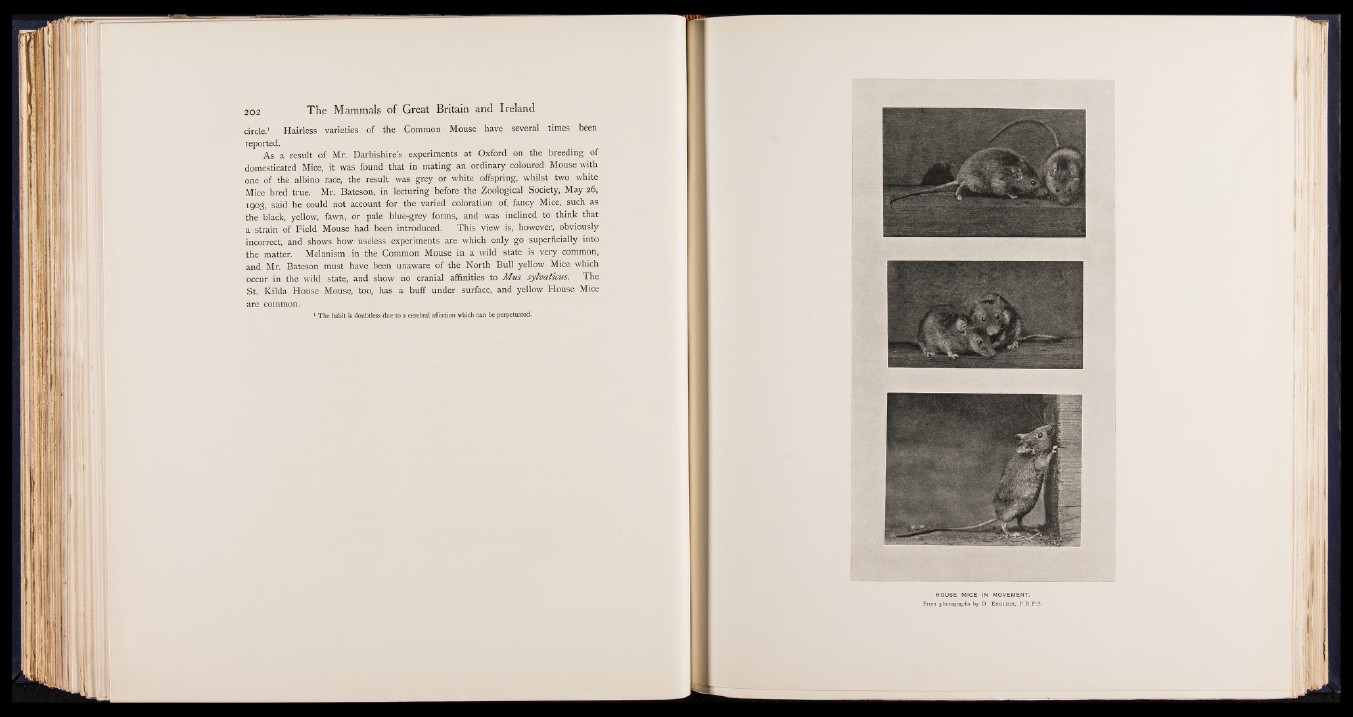
circle.1 Hairless varieties of the Common Mouse have several times been
reported.
As a result of Mr. Darbishire’s experiments at Oxford on the breeding of
domesticated Mice, it was found that in mating an ordinary coloured Mouse with
one of the albino race, the result was grey or white offspring, whilst two white
Mice bred true. Mr. Bateson, in lecturing before the Zoological Society, May 26,
1903, said he could not account for the varied coloration of. fancy Mice, such as
the black, yellow, fawn, or pale blue-grey forms, and was inclined to think that
a strain of Field Mouse had been introduced. This view is, however, obviously
incorrect, and shows how useless experiments are which only go superficially into
the matter. Melanism in the Common Mouse in a wild state is very common,
and Mr. Bateson must have been unaware of the North Bull yellow Mice which
occur in the wild state, and show no cranial affinities to Mus sylvaticus. The
St. Kilda House Mouse, too, has a buff under surface, and yellow House Mice
are common.
1 The habit is doubtless due to a cerebral affection which can be perpetuated.